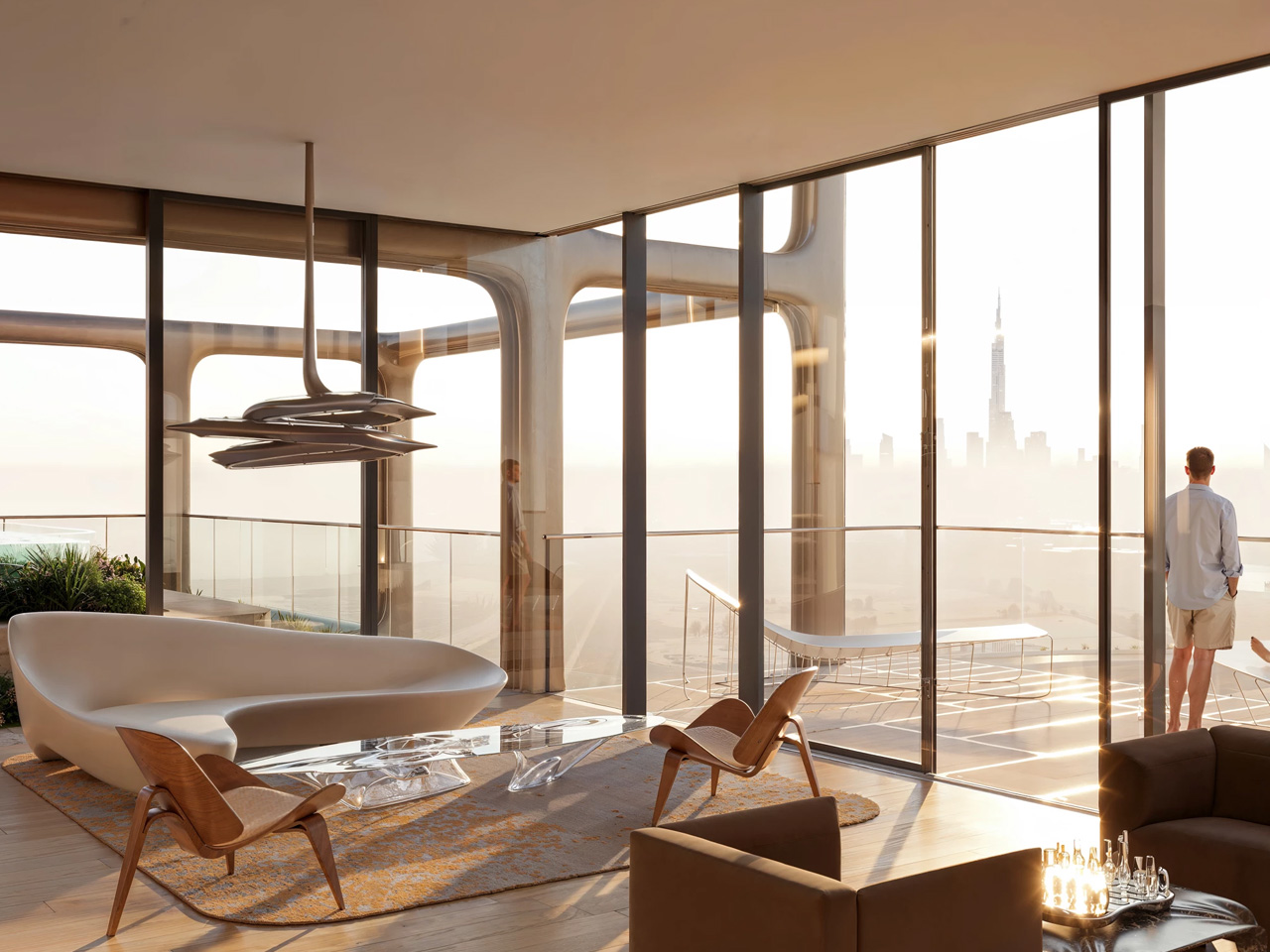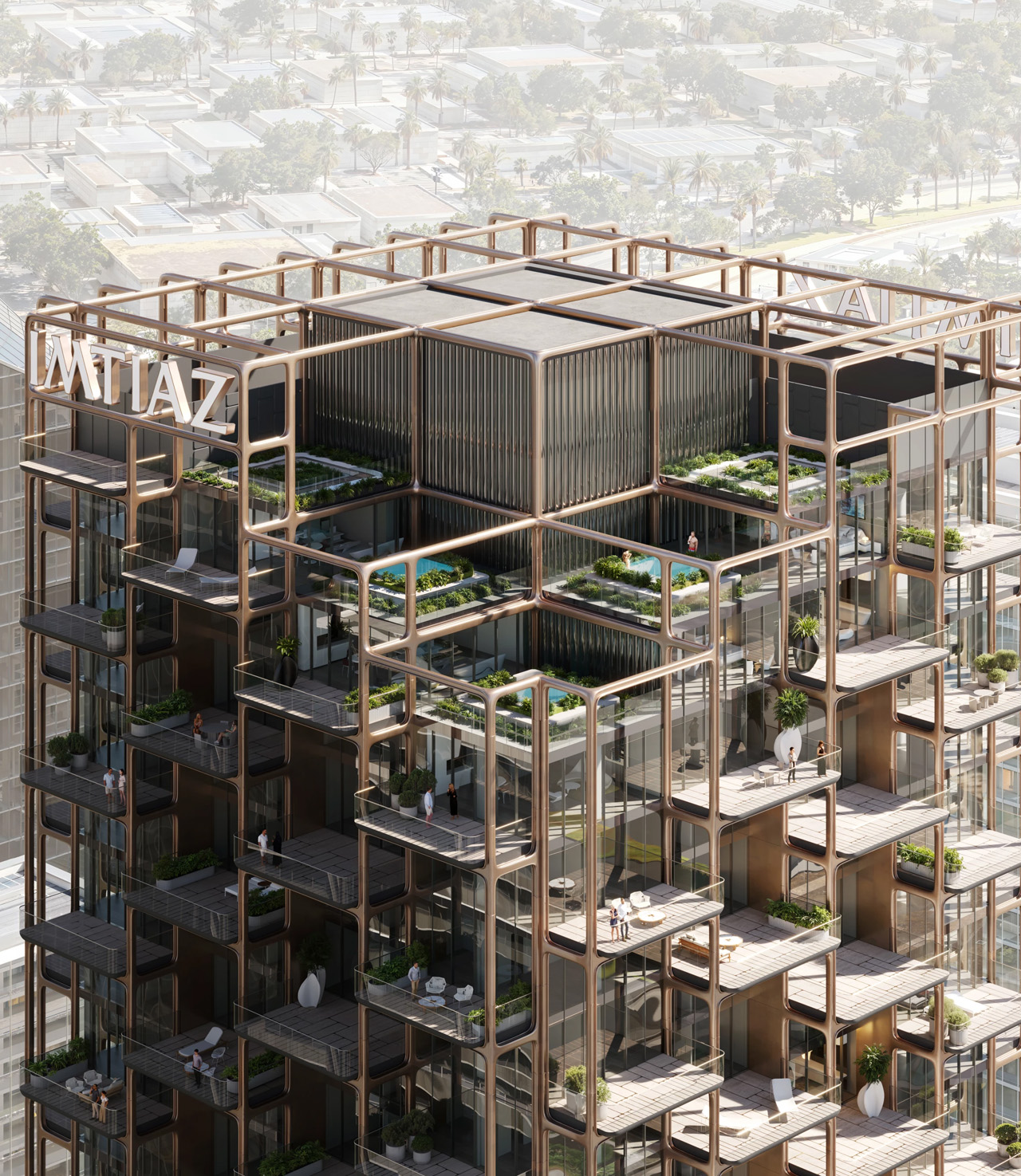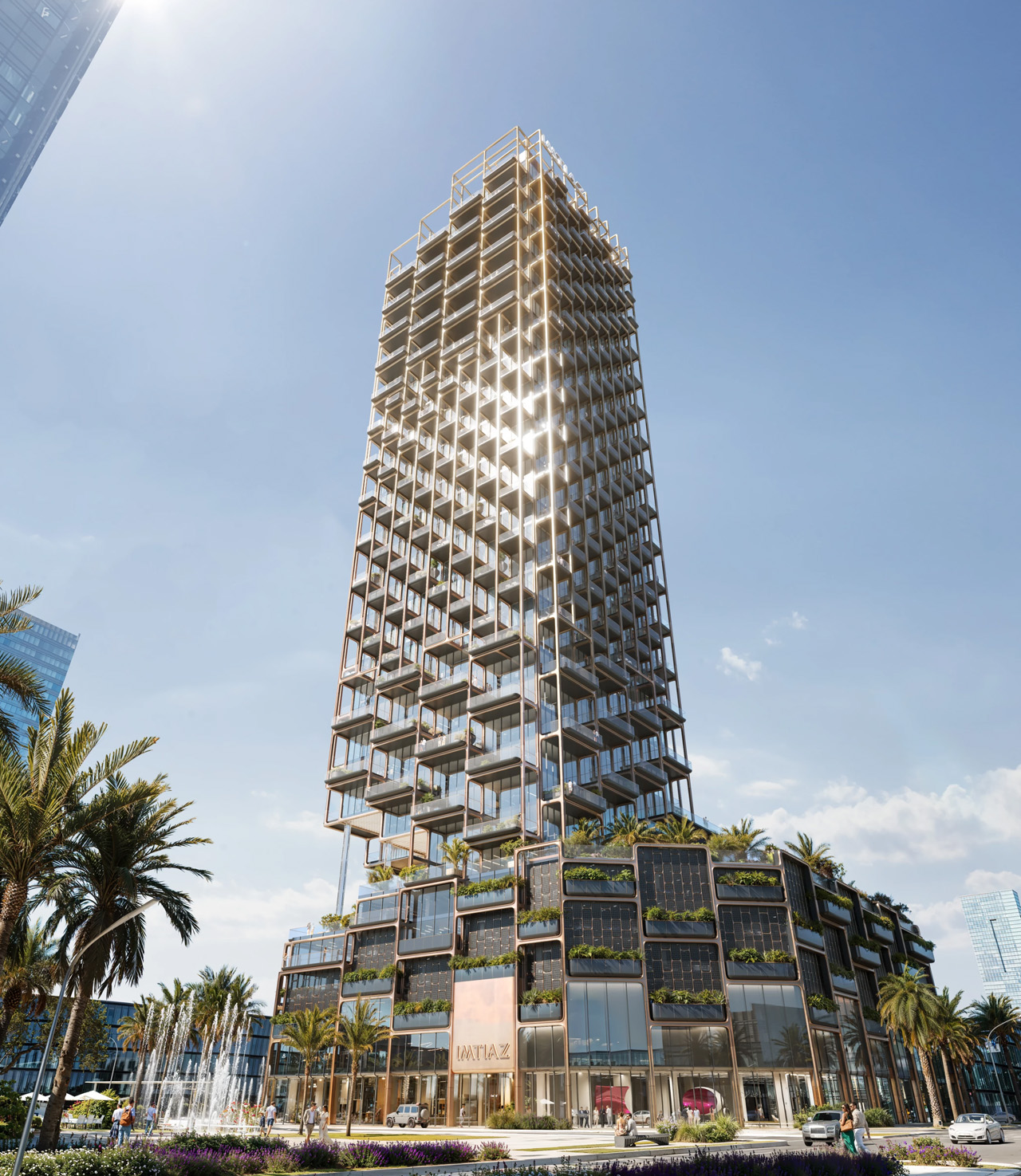
Zaha Hadid Architects has revealed designs for Symphony Tower, a 42-story residential skyscraper that brings traditional Emirati craftsmanship into conversation with contemporary architecture. Developed by Imtiaz Developments, the tower rises within Dubai’s emerging Horizon district, positioned between the Meydan Racecourse and the protected wetlands of Ras Al Khor at the historic Dubai Creek. The 38,000-square-meter development represents a significant addition to the city’s constantly evolving skyline, connecting modern design ambitions to the waterway on which Dubai was originally founded.
The building’s defining feature is an illuminated lattice exoskeleton inspired by the geometric patterns of traditional Emirati embroidery and weaving. This interlaced structural framework transforms age-old textile techniques into architectural form, creating a striking visual presence while serving practical functions. The woven exterior provides natural shading across the façade, reducing solar heat gain in Dubai’s intense climate. The design references the craftsmanship of traditional local artisanship, translating heritage techniques into a parametric, contemporary language that characterizes Zaha Hadid Architects’ distinctive approach.
Designer: Zaha Hadid Architects


The exoskeleton does more than shield the building from the sun. Its geometric pattern creates varied terraces and outdoor living spaces for each apartment, extending usable areas beyond the tower’s glass envelope. Integrated photovoltaics woven into the lattice structure illuminate the façade after sunset, casting a soft glow that makes the tower a luminous marker on the skyline. This inside-out approach places the structural system at the forefront of the design, making infrastructure into ornament and blurring the traditional distinction between decoration and engineering.
The project embraces modular construction techniques, a method that can accelerate building timelines while maintaining precision. This approach aligns with the tower’s sustainability ambitions, which include greywater recycling, low-flow fixtures, and drought-tolerant landscaping to minimize water consumption in the arid environment. The shading provided by the exoskeleton contributes to passive cooling strategies, reducing the energy demands of climate control systems. These environmental considerations demonstrate how the decorative lattice serves multiple performance objectives beyond its aesthetic impact.


Symphony Tower sits within a landscape of natural and cultural significance. The nearby Ras Al Khor Nature Reserve functions as a protected wildlife sanctuary, attracting migratory bird species, including the UAE’s native Rose Flamingo. The tower’s location at the uppermost reaches of Dubai Creek connects it to historical origins, creating a dialogue between contemporary development and the city’s founding narrative. This positioning gives the project particular resonance within Dubai’s broader urban story.
Unveiled in November 2025, the project has generated substantial attention across architectural media for its striking visual identity and cultural resonance. The tower continues Zaha Hadid Architects’ exploration of culturally rooted design within the Gulf region, creating a particularly legible connection between Emirati weaving heritage and architectural innovation. Though the completion date remains to be confirmed, Symphony Tower represents Imtiaz Developments’ ambitions for the Horizon district while promising to become a recognizable landmark, weaving traditional craftsmanship into the fabric of contemporary urban life.


The post Zaha Hadid Architects’ Symphony Tower Weaves Emirati Tradition into Dubai’s Skyline first appeared on Yanko Design.
Read More . . .|
 | Tweet
| Tweet